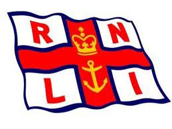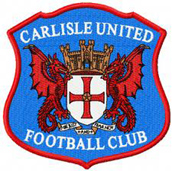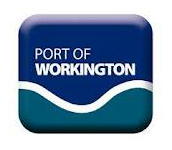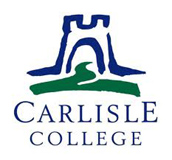- Home
- Scarrows
- Mariners
- Cumberland
- Miscellaneous
Dublin
Dublin was founded by the Vikings. At the end of the 8th century Vikings began raiding Ireland and in the 9th century Norwegians used the mouth of the Liffey as a base from which to raid the rest Ireland. Later the Vikings turned from raiding to conquest. In 918 the Danes landed in eastern Ireland and conquered the area surrounding the Liffey. The Danes founded a new town on the south bank of the Liffey in 841. It was called Dubh Linn which means black pool. The new town of Dublin was fortified with a ditch and an earth rampart with a wooden palisade on top. In the late 11th stone walls were built around Dublin. In Dublin there were craftsmen like blacksmiths and carpenters, jewelers and leather workers. Other craftsmen made things like combs from bone or deer antler. There was also a wool weaving industry. The Danes were slowly converted to Christianity and the first bishop of Dublin was appointed in 1028. In his time the first Christchurch cathedral was built.
In the wars between Irishmen and Vikings the little town of Dublin was sacked several times. Yet each time it recovered. Dublin soon grew to be the largest and most important town in Ireland. Dublin may have had a population of about 4,000. The people of Dublin traded with the English towns of Chester and Bristol.
In 1166, Mac Murrough, King of Leinster was forced to leave his kingdom and flee abroad, In 1170 he enlisted the help of a Norman, The Earl of Pembroke, known as Strongbow and they invaded Ireland. When the Norman army approached Dublin the Archbishop was sent out to negotiate. But while the leaders talked some Norman soldiers took matters into their own hands and broke through the defenses into the town. They set about killing the townspeople. The Viking king and his followers fled by sea. In 1171 Mac Murrough died and Strongbow declared himself king of Leinster. The Viking king returned to Ireland with an army and attempted to recapture Dublin. The Norman army went out to meet them. The Vikings were crushed and their king was captured and executed. The native Irish under their high king O'Connor laid siege to the town but the Normans sallied out and routed them.
The English king was afraid that Strongbow would become too powerful and might call himself king of Ireland. To prevent that happening the English king came over to Ireland himself. Most of the Irish rulers submitted to him and he became Lord of Ireland. The English king gave Dublin to the merchants of Bristol. It became their colony. Afterwards many people from Bristol and South West England came to live in Dublin. for centuries after that Dublin was ruled by the English or those of English descent.
The Normans built a wooden fortress in Dublin. In the early 13th century it was rebuilt in stone. The English king also rebuilt the walls of Dublin and strengthened them. In 1229 Dublin gained its first mayor. Dublin grew rapidly and may have had a population of 8,000 by the 13th century.
Wine from France into was imported into Dublin. Iron was also imported, as was pottery. Exports included hides, grain and pulses. There were weekly markets in Dublin and after 1204 a fair.
In the 16th century Dublin prospered. For the upper and middle classes their was an impressive rise in living standards. Although conditions improved for the well off there were many beggars in Dublin. Many of them drifted in from the surrounding countryside. Furthermore Dublin was still dirty and unsanitary, like all 16th century towns. It suffered from outbreaks of plague.
Dublin continued to grow and may have had a population of around 20,000 by 1640. In 1616 the town gained its first street lighting when it was decreed that a candle or lantern should be hung outside every 5th house on dark nights. In 1621 a customhouse was built.
Following the civil war Catholics were expelled from Dublin in large numbers since their loyalty was suspect. Plague broke out again in 1650. A large part of the population died, possibly as many as half. In 1659 the population was less than 9,000. Nevertheless Dublin recovered and prospered in the late 17th century. For centuries Dublin had only one bridge. A second one was built in 1670. The first newspaper in Dublin was produced in 1685. In the late 17th century the wool and linen trade with England grew. By 1700 Dublin had about 60,000 inhabitants and it continued to grow rapidly.
Conditions continued to improve in the 18th century, at least for the middle and upper classes. Dublin became a more refined and genteel city but there was still a great deal of poverty.
Parliament House, a new meeting place for the Irish parliament was built in 1735. Leinster House, which is the present home of the Irish Parliament was built in 1745 for the Duke of Leinster. A new Custom House was built in 1791. The Royal Exchange was built in 1779 and was later (1852) made the City Hall. In 1757 the Irish Parliament passed an act which created a body of men with powers to widen the streets. In 1773 a body of men for paving, cleaning and lighting the streets was formed. Their powers were transferred to the city council in 1851.
In the mid 18th century stagecoaches began running from Dublin to other towns such as Kilkenny, Cork and Belfast. There was a sizeable coach making industry in the city. There were also many sedan chairs for the well to do. Grand canal opened in 1779. In 1786 Dublin gained its first police force. Kilmainham prison was built in 1796. O'Connell Bridge was built in 1790. Guinness was first brewed in Dublin in 1759.
By 1800 the population of Dublin had risen to around 180,000. In 1824 a gasworks was built in Dublin and gas was used to light the streets from 1825. The first electric lights in Dublin were switched on in 1881 but electric light was a rare novelty until the early 20th century. In the early 19th century sewers were laid but only in the middle class districts. But the sewers were extended in the 1850s, 1860s and 1870s.
The railway reached Dublin in 1834 when a line to Kingsbridge was built. Horse drawn buses began running in Dublin in 1840. They were followed by horse drawn trams in 1872.
From 1838 there were workhouses in Dublin where the destitute were fed and housed. During the potato famine they were overwhelmed by the numbers fleeing starvation in the countryside. Soup kitchens had to be set up in the streets to try and feed them. Although the population of Ireland fell sharply after the famine the population of Dublin actually rose because of the number of starving people fleeing to the city.
During the Easter Rising, in 1916, 64 rebels were killed (15 were later executed), 130 British soldiers were killed. Also 300 civilians were killed and many buildings were razed.
In 1907 the Irish International Exhibition was held in Herbert park. It was an exhibition of industrial and commercial goods. In the early 20th century there was still appalling poverty in Dublin with perhaps a quarter of families living in one room. In 1912 slum demolition began when houses north of the Liffey were demolished and replaced with proper houses. Slum clearance on a large scale began in the 1930s and continued through the 1940s and 1950s.
In 1934 the Old Dublin Society was formed. In May 1941 the Germans bombed Dublin killing 28 people. Dublin civic museum opened in 1953. In 1962 the James Joyce museum opened. In 1966 a Remembrance Garden was opened for all those who died in the fight for independence. The Friends of Mediavel Dublin was founded in 1976.
In the 1960s and 1970s redevelopment of the city centre took place, some of it controversial as it involved the demolition of fine old buildings. In the late 20th century the population of the city centre fell as areas of slum housing were demolished and replaced by new estates on the outskirts of the city but in the 1990s new apartments were built in the city centre.
In the late 20th century traditional industries such as textiles, brewing and distilling declined but the city council built new industrial estates on the outskirts of the city and new industries like electronics, chemicals and engineering appeared.
Imports
| Goods | Place of Origin |
|---|---|
| Coal | Britain |
| Textiles | Britain |
| Machinery | Britain |
Exports
| Goods | Destination |
|---|---|
| Textiles (including linen) | Britain |
| Cattle | Britain |
| Guiness | Britain |
Industry
| Port Industries | Other Industries |
|---|---|
| Small-scale Shipbuilding | Guiness Brewery |
| Sail-making | Jameson's Whisky Distillery |
| Fishing | Glassworks |
| Marine Works | Coachbuilding |
Scarrow Associations
| Scarrow | Period |
|---|---|
| John Scarrow II | 1824-1829 |
| Joseph Scarrow | 1836-1837, 1845, 1849-1850 |
| William Scarrow | 1835-1839, 1850, 1853, 1856-1857, 1864 |










